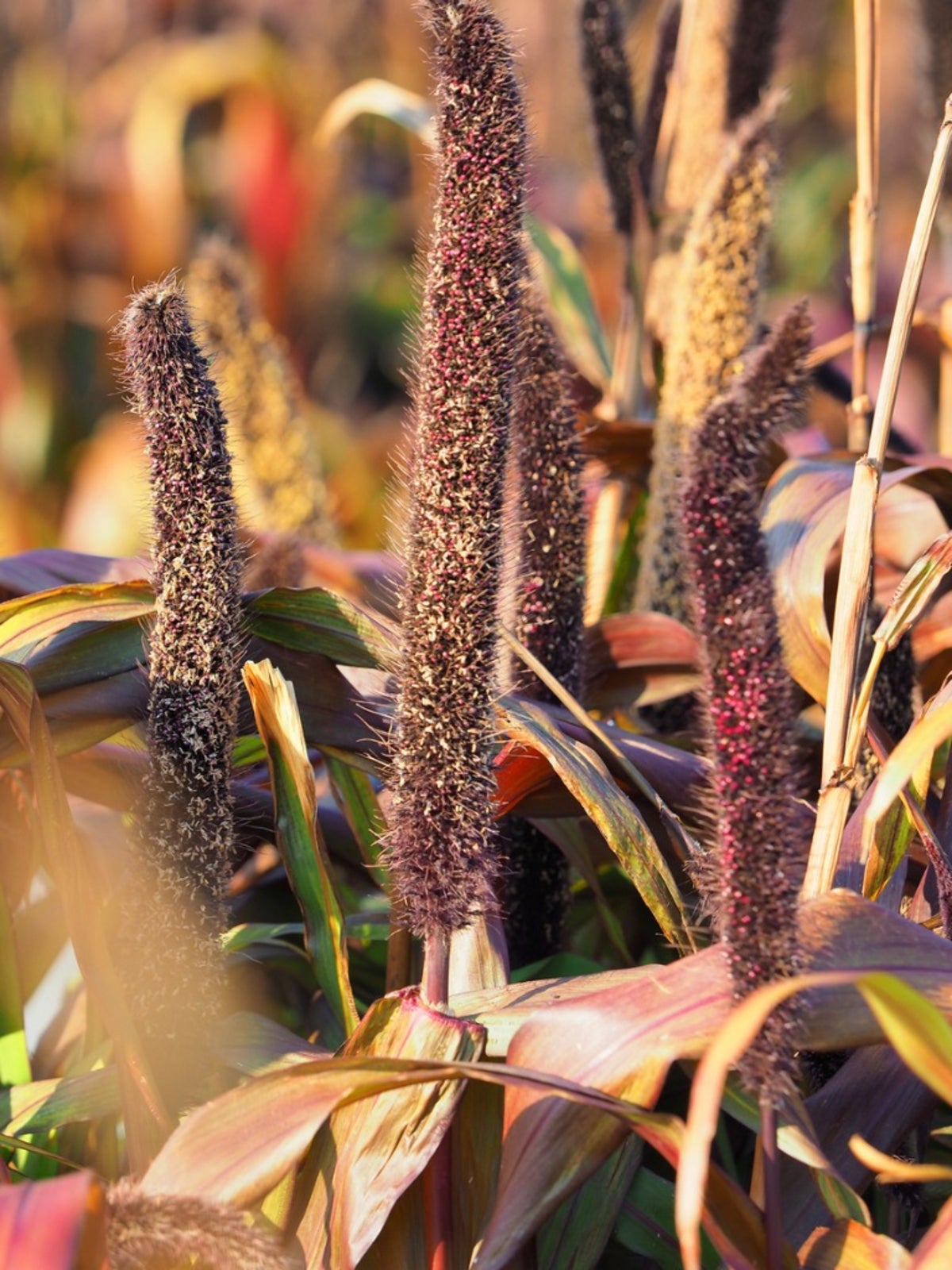Ornamental Millet Grass: How To Grow Ornamental Millet Plants

Grasses grown in the garden provide interesting contrast and often ease of care for the home gardener. Pennisetum glaucum, or ornamental millet grass, is a prime example of a show-stopping garden grass.
Information About Ornamental Millet Grass
Ornamental millet grass is derived from ordinary millet, a cereal grain that is an important food crop in semi-arid areas of Asia and Africa, and is cultivated in the United States as a forage crop. A millet breeder collecting millet germplasm from around the world grew a hybrid with stunning purple foliage and a spectacular seed spike. While this millet hybrid had no agriculture value, it became an award-winning specimen for the home landscape. This ornamental grass bares 8 to 12 inch (20-31 cm.) cattail-like flower plumes that change from gold to purple as they mature. This stunning purple is echoed in the burgundy red to amber/purple corn-like foliage of the grass. Ornamental millet plants grow 3 to 5 feet (1-1.5 m.) in height. The seed spikes of ornamental millet plants may be left on the plant to provide food for birds as they ripen or may be cut and used in dramatic floral arrangements.
Best Time to Plant Millet
The purple foliage of ornamental millet plants adds a lovely counterpoint to a garden either in mass plantings or in combination with other plant specimens and even in container gardening when a tall focal point is required. The best time to plant millet is after the danger of frost has passed. Ornamental millet needs warm air and soil for germination, so even into June seeds may be sown, especially since ornamental millet plants grow quickly. It takes 60 to 70 days to go from seed to flower.
Care of Millet
Transplants for growing ornamental millet may be purchased from the local garden center or is easily grown from seed. If obtaining ornamental millet plants from a nursery, select those that are not root bound in the pot. When growing ornamental millet, you need to situate it in a location of full sun in USDA zones 10 to 11. An annual, growing ornamental millet not only needs a sunny exposure, but well draining soil. Care of millet also dictates keeping it moist, so mulch or other organic compost is a great idea around the base of the ornamental millet plants to retain moisture. However, growing ornamental millet may be susceptible to drowning and edema, so there is a fine line between overwatering and maintaining moist conditions.
Ornamental Millet Grass Varietals
- ‘Purple Majesty' is a commonly grown millet variety that will thrive if not stressed by factors such as overwatering or cold temperatures and produces a profusion of blooms with 4 to 5 foot (1-1.5 m.) burgundy foliage.
- ‘Jester' has 3 inch (8 cm.) leaves in hues of burgundy, green, and chartreuse with dark flower plumes.
- ‘Purple Baron' is a compact 3 foot (1 m.) variety.
Sign up for the Gardening Know How newsletter today and receive a free copy of our e-book "How to Grow Delicious Tomatoes".

Amy Grant has been gardening for 30 years and writing for 15. A professional chef and caterer, Amy's area of expertise is culinary gardening.
